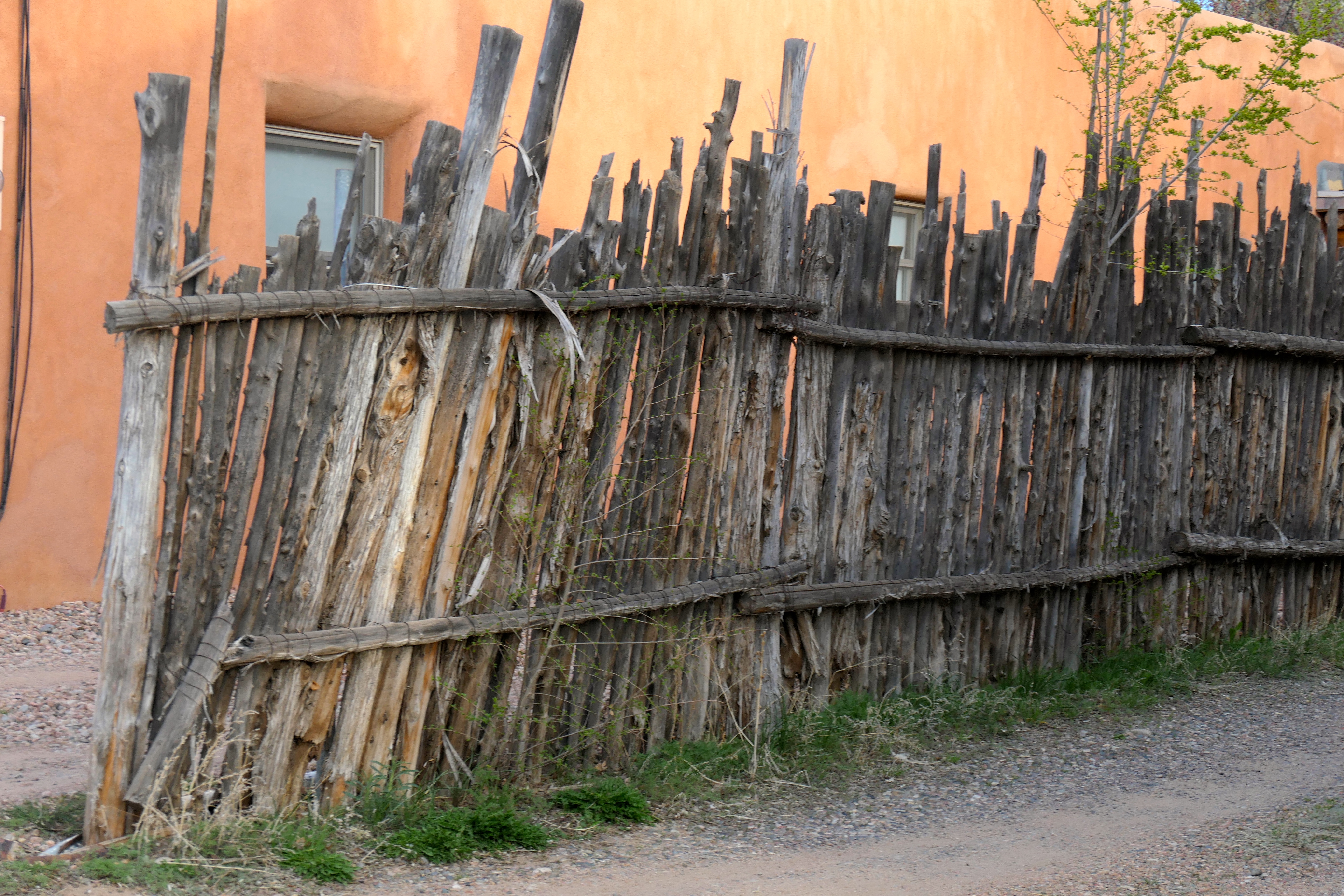Maybe it’s just me, but one of the most glaring juxtapositions during my stay in New Mexico seemed that between the wide open sky and landscapes, and the squat, walled-off architecture surrounded by coyote fences.

Todays photographs are trying to capture the vastness of the landscape, but cannot really replicate the feeling you have when you stand under that enormous sky.






Imagery does better when it comes to depicting the Pueblo Revival architecture that is so prevalent in Santa Fe and Taos. Wikipedia tells me that “It was popularized in the 1920s and 1930s by a group of artists and architects seeking to establish a unique regional identity. In 1957, a committee led by John Gaw Meem drafted Santa Fe “H” Historical District Regulations Ordinance No. 1957-18, commonly known as the Historical Zoning Ordinance. This ordinance mandated the use of the “Old Santa Fe Style,” which encompassed “so-called Pueblo, Pueblo-Spanish or Spanish-Indian and Territorial styles,” on all new buildings in central Santa Fe. This ordinance remains in effect, meaning the Pueblo style continues to predominate.”





The style draws from the historical craft of both the indigenous people and the Spanish colonialist. Buildings used sun-dried clay bricks mixed with grass for strength, mud-mortared, and covered with additional protective layers of mud. These adobe homes are characterized by flat roofs and soft, rounded contours. If they use more modern materials these days, they still mimic the appearances with paint and clay applications. Roofs are supported by a network of vigas — long beams whose ends protrude through the outer facades — and latillas, smaller stripped branches layered between the vigas.
https://www.frommers.com/destinations/new-mexico/in-depth/architecture




Clearly the form has a function: the truly harsh weather conditions – ice cold in the winters, mercilessly hot in the summer -are held at bay by the thick walls, houses ducking away from the strong winds.
The fences had utility as well, as their name implies: livestock had to be protected against coyotes, and the fences were makeshift constructions from anything found in the landscape. They reminded me of the Japanese term Wabi-Sabi (侘寂)– a traditional Japanese aesthetics embracing transience and imperfection, acknowledging a beauty that is imperfect, impermanent, and incomplete.





Modern structures emulate at least the feel of ducking under that sky.


Even the churches are squat, offering protective walls rather than stretching proudly or haughtily into the heavens.

At the end of my stay I felt there was after all a certain harmony between disparate needs and elements, rather than what I had earlier assessed as defiance against a kind of void.

Folklorist Juan B. Rael, who was born into the Spanish culture of NM, documented songs of religious holidays, religious plays, and secular songs as performed by members of the community in 1940. Here are some terrific examples:
https://www.loc.gov/item/raelbib000120/





